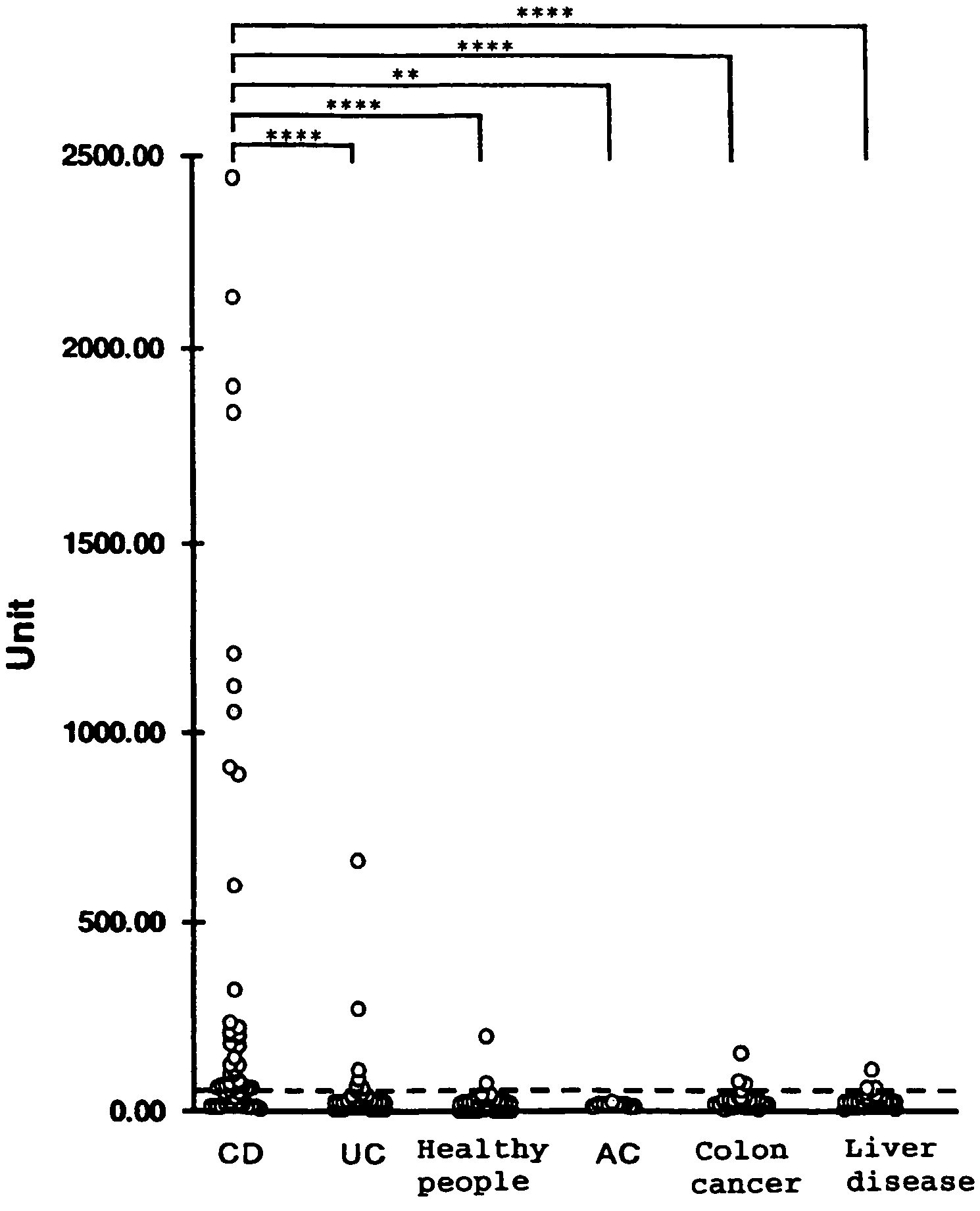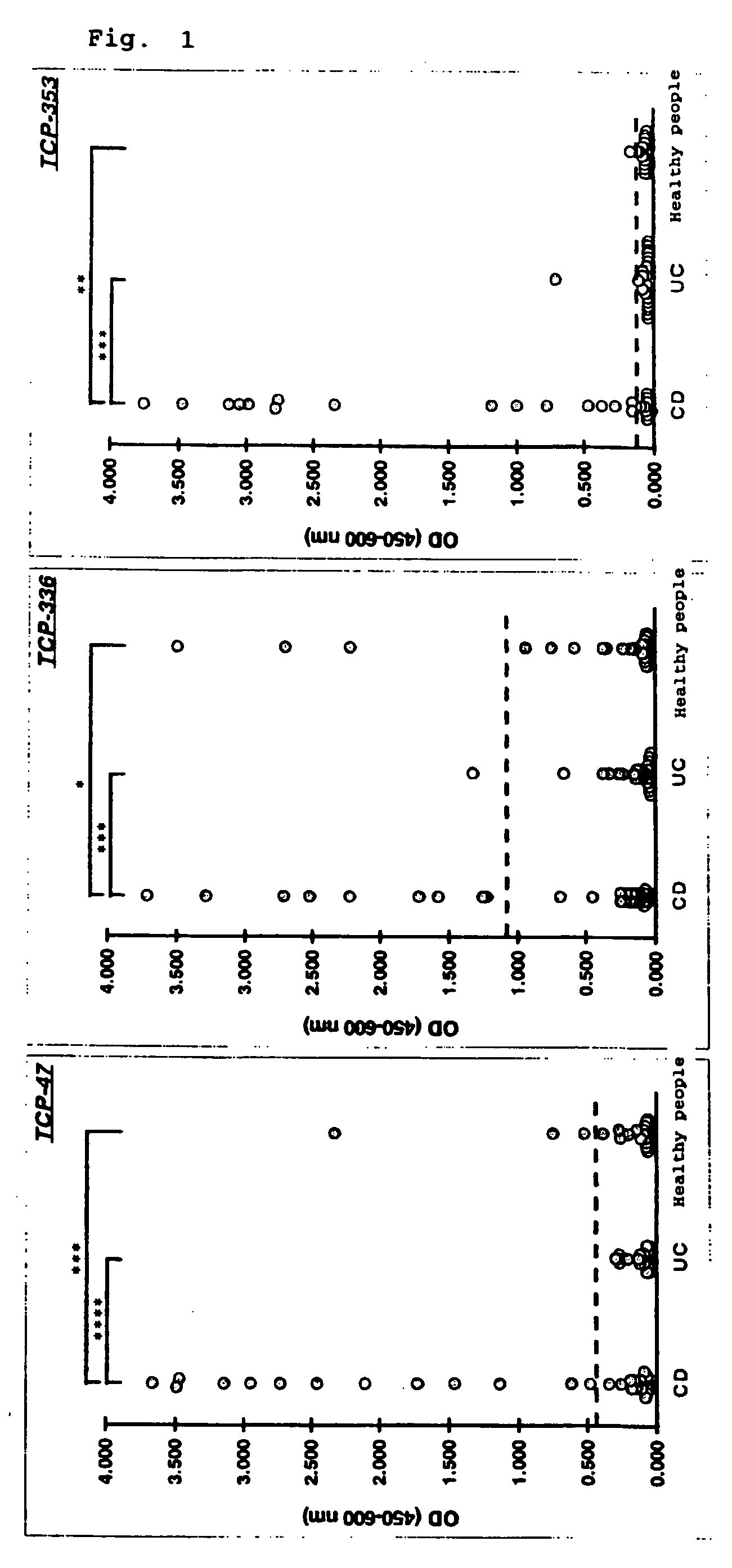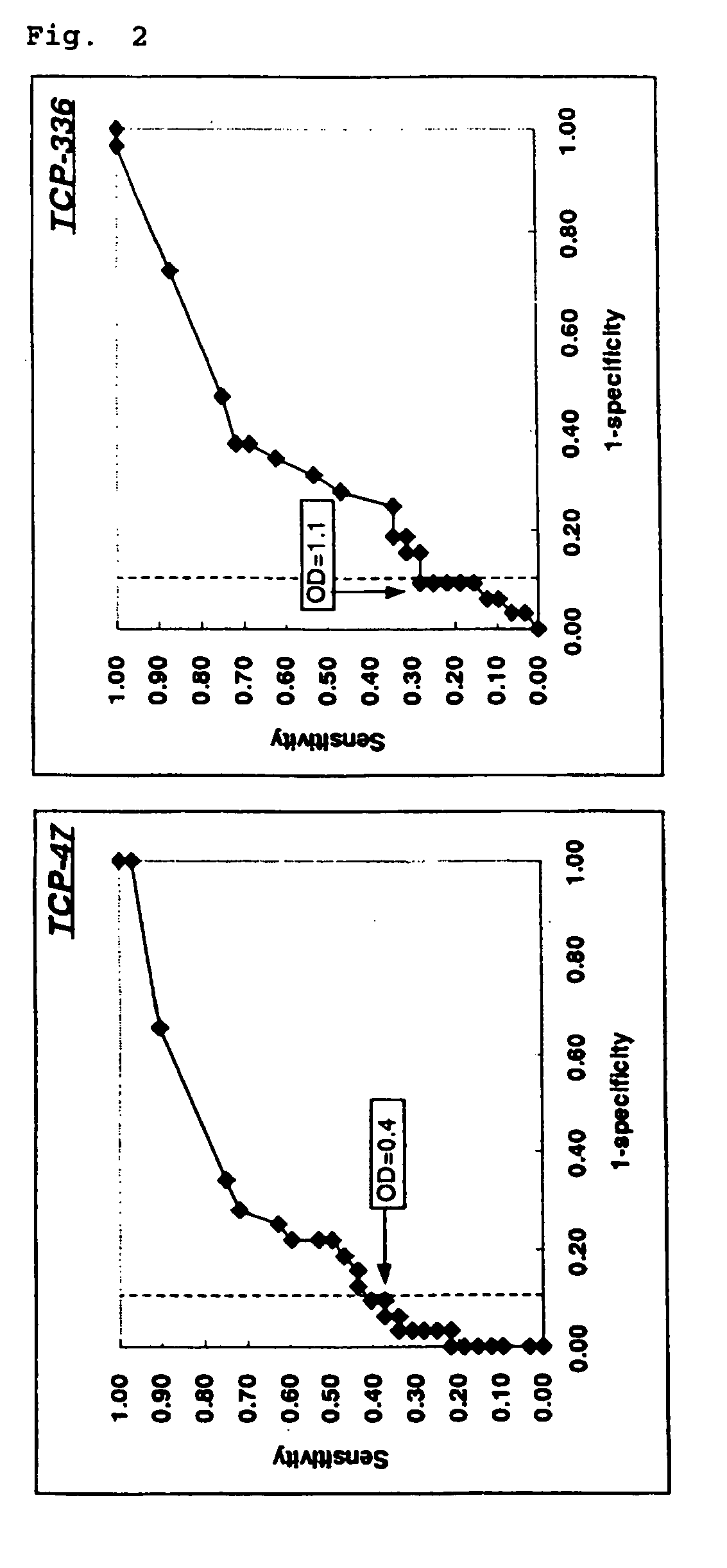Crohn's disease anitbody epitope peptide and reagent for testing crohn's disease
- Summary
- Abstract
- Description
- Claims
- Application Information
AI Technical Summary
Benefits of technology
Problems solved by technology
Method used
Image
Examples
example 1
Selection and Identification of Epitope Peptides to the Crohn's Disease Antibody
[0079]1) Preparation of a cDNA Phage Display Library Using T7 Phage
[0080]Total RNA was extracted and purified from about 108 cultured cells of Caco-2 (Human colon carcinoma; RIKEN CELL BANK) by using an RNA extraction kit from Qiagen to obtain 654 μg of the total RNA. By using an oligo(dT)-cellulose column, 22.8 μg of poly (A)+ RNA was purified from 600 μg of the total RNA, and then single strand cDNA was synthesized using a random oligomer (nnnnnnCG) and reverse transcriptase (Omni-RT from Qiagen).
[0081]Then, by using RNaseH and E. coli DNA polymerase I, double strand cDNA was synthesized, which was then end-blunted by T4 DNA polymerase. After the cDNA was methylated by methylase, linker sequences (18 mer oligoDNA) were ligated by T4 DNA ligase, and further the ends of the cDNA was cleaved by restriction enzymes (EcoRI and NotI) followed by gel filtration with a spin column (from Clontech) to remove unr...
example 2
Reactivity of TCP-47, TCP-336 and TCP-353 with Various Serum Samples
[0097]ELISA was performed using the epitope peptides to the Crohn's disease antibody obtained in Example 1 as antigens to study reactivity with various sera (from Crohn's disease patients, ulcerative colitis patients, or healthy people).
[0098]To a microplate, each of the peptides diluted with PBS to 2 μg / ml was added and reacted at 4° C. overnight. After the reaction, the microplate was washed with a blocking buffer (PBS containing 2% BSA, 5% sucrose, and 0.1% NaN3) followed by blocking with the same buffer to prepare a peptide-immobilized plate.
[0099]To a peptide-immobilized plate, various sera (Crohn's disease patient sera: 32 samples, ulcerative colitis patient sera: 32 samples, and healthy people sera: 32 samples) that were diluted to 1 / 100 with a sample diluting solution (PBS containing 1% BSA and 0.1% Tween20) were added and allowed to stand still at 22° C. for one hour, followed by washing with a washing buff...
example 3
Measurement of Various Many Serum Samples by ELISA with TCP-353
[0107]TCP-353, whose positive percentage for the Crohn's disease patient sera was the highest (53.1%) and false positive percentage for the ulcerative colitis patient sera or for the healthy people sera was low (6.3% and 3.1%, respectively) in Example 2, was used to measure various many serum samples (Crohn's disease patient sera: 60 samples, ulcerative colitis patient sera: 109 samples, healthy people sera: 71 samples, acute enteritis patient sera: 11 samples, colon cancer patient sera: 35 samples, and chronic liver disease patient sera: 49 samples).
[0108]Measurement was carried out in the same manner as in Example 2 except that the serum was diluted to 1 / 400. Further, by using a standard solution prepared by pooling positive patient sera, a standard curve was drawn, and the resulting absorbance values were converted into unit values. Results of measurement are shown in FIG. 3 as a scatter diagram.
[0109]Based on these r...
PUM
 Login to View More
Login to View More Abstract
Description
Claims
Application Information
 Login to View More
Login to View More - R&D
- Intellectual Property
- Life Sciences
- Materials
- Tech Scout
- Unparalleled Data Quality
- Higher Quality Content
- 60% Fewer Hallucinations
Browse by: Latest US Patents, China's latest patents, Technical Efficacy Thesaurus, Application Domain, Technology Topic, Popular Technical Reports.
© 2025 PatSnap. All rights reserved.Legal|Privacy policy|Modern Slavery Act Transparency Statement|Sitemap|About US| Contact US: help@patsnap.com



